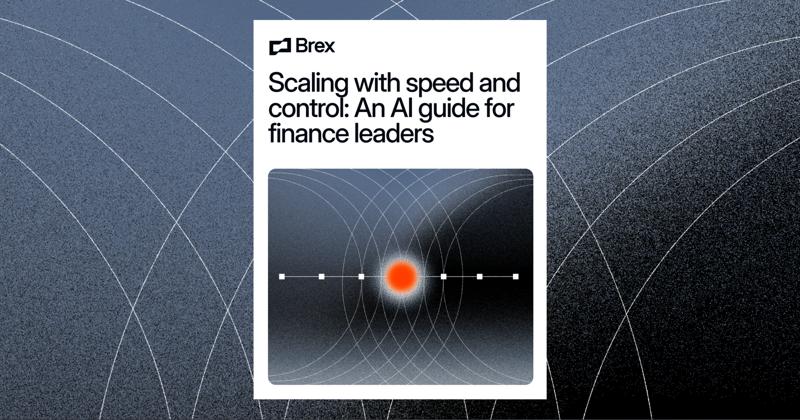The Brex Benchmark
The AI infrastructure shift: Why OpenAI spend is up 80% on Brex.

Sumeet Marwaha
·
Nov 11, 2025
Nov 11, 2025
The Brex Benchmark is a monthly snapshot of the top software and AI vendors by dollar spend using Brex. With 30,000+ customers spending billions of dollars on Brex, we have an inside look at the top tools driving modern business. The methodology includes Brex card and bill pay transactions. "Startups" are companies with under 250 employees, and "enterprises" are those with 250+ employees.
From chatbot curiosity to platform strategy, OpenAI shows no signs of slowing.
OpenAI hit 1 million business customers in November, the fastest-growing business platform ever, after reaching 800 million weekly consumer users in October — which CEO Sam Altman said is more than double since early 2025. That hyper-growth is mirrored in Brex data.
The number of unique customers spending on OpenAI grew 25% from January through October, and OpenAI spend across Brex customers grew 80% over the same period. This growth came from an expansion in spending from existing customers, with startups spiking in their usage of ChatGPT’s API offerings.
OpenAI continues to release ChatGPT models at a fast pace, but “chat” is the mechanism, not the product. The real growth now lies in coding APIs, embedded workflows, long-document processing, and enterprise AI agents. Each release this year has expanded OpenAI’s footprint inside businesses:
- February 2025: GPT-4.5 (“Orion”) refined reasoning and multi-step planning.
- April 2025: GPT-4.1 API brought longer context windows and deep app integrations.
- May 2025: Codex launched as a cloud-based software engineering agent, embedding AI directly into dev workflows.
- August 2025: GPT-5 arrived, enabling multimodal reasoning across text, voice, and vision.
- October 2025: ChatGPT Atlas, an in-browser assistant, blurs the line between web navigation and work automation.
Every release represents a new business opportunity for OpenAI. More API usage, more seats, and deeper embedding in day-to-day operations.
And while startups drove the early wave of AI adoption, enterprises are catching up. Brex data shows enterprise OpenAI spend up 20% MoM, which aligns with OpenAI’s broader push into the corporate market: strategic partnerships, enterprise app integrations, and long-term infrastructure deals. As companies like Amazon, Microsoft, and Workday cut headcount this year to shift resources toward AI and automation, the momentum (and dollars) appear to be flowing straight to OpenAI.
Read AI has entered the enterprise chat.
Enterprises are consolidating around a few core AI vendors like OpenAI and Anthropic, which makes Read AI’s rise as the lone newcomer in the enterprise Top 10 all the more impressive. The productivity tool summarizes meetings, emails, and messages into actionable insights. Led by founder David Shim, Read AI recently raised a $50M Series B after a $21 M Series A in 2024, backed by Smash Capital, Goodwater, and Madrona. Its rapid enterprise adoption suggests it’s becoming a credible force in a segment that rarely makes room for new AI platforms.
Startup AI tools, meanwhile, saw strong month-over-month growth (+25%), with 9 of 10 tools seeing increased spend in October. Growth was led by OpenAI (+51%), Deepgram (+127%), and ElevenLabs (+37%), signaling a deeper integration of AI in coding, voice, and infrastructure, as well as a clear shift away from creative tools.
Enterprises reopen their ad wallets for X.
X Corp is showing a rebound in its ad business. Industry forecasts project a 17.5% increase in US ad revenue in 2025, which would be its first annual growth since the Musk takeover. Brex data shows enterprise spending on X jumped 30% month-over-month in October and 235% since July, pushing it into the enterprise top 10 for the first time. Startups also boosted ad budgets across Google (+20%) and Meta (+10%), signaling a broader pivot toward ROI-driven, attention-dense channels.
Low ad costs and improved infrastructure seem to be fueling advertisers’ return to X. According to Hootsuite’s 2025 benchmarks, X’s CPM (~$2.09) sits well below Meta and LinkedIn, giving advertisers cheaper performance reach. The company has also rebuilt its ad stack, adding brand-safety integrations with DoubleVerify and Integral Ad Science, to restore enterprise confidence. In the Brex dataset, X is clawing back share in a market that demands cost-efficient, higher-engagement impressions.
Other trends in Brex’s SaaS data:
- Developer and infrastructure spend climbed among enterprises, driven by spikes in Snowflake (+510%) and JetBrains (+100%), marketing and creative tools like HubSpot and Adobe saw noticeable pullbacks.
- Zoom spending jumped 20%, suggesting hybrid work investments remain steady.
Brex data suggests a curation trend: companies are trimming seat-based licenses where they can and pruning redundant tools in favor of platforms that scale.
Coming next month: Check back in to The Brex Benchmark next month for some fascinating insights in our end-of-year wrap.
Sumeet Marwaha is the Head of Data at Brex, supporting Brex in understanding how customers spend, adopt tools, and grow their businesses.
All analysis conducted for this report that uses Brex internal customer data is anonymized and aggregated for privacy. To learn more about how we use data in anonymized or aggregated form for these trend reports, email us at privacy@brex.com.
